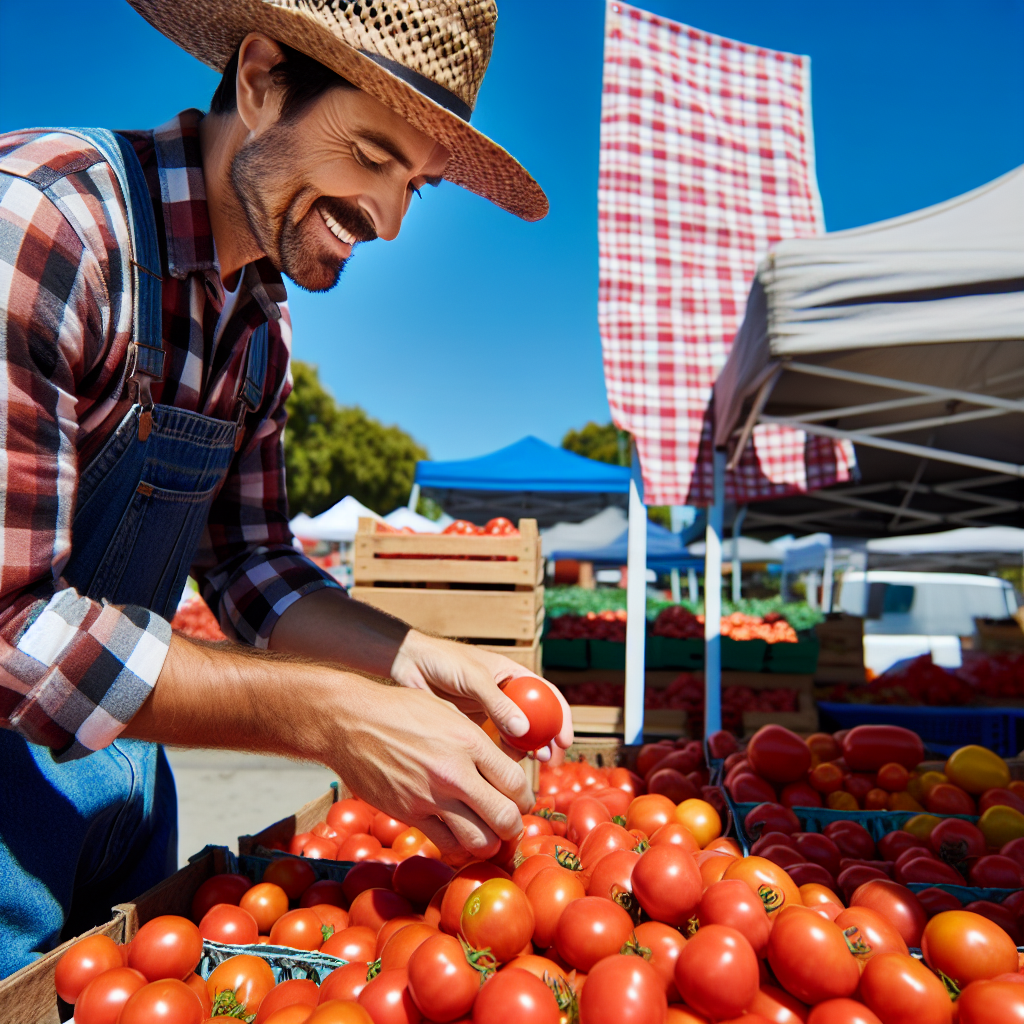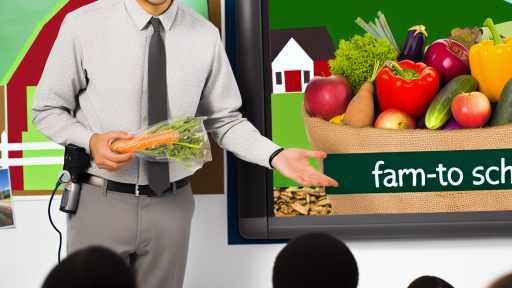Understanding the Benefits of Local Food Sourcing for Farmers
Boosting the Local Economy
Local food sourcing significantly strengthens the local economy.
By purchasing from nearby farms, consumers keep money within the community.
This financial boost helps local businesses thrive as well.
Furthermore, it creates new job opportunities in the agricultural sector.
Enhancing Food Freshness and Quality
Consumers appreciate the freshness of locally sourced food.
Additionally, local food often has superior taste and nutritional value.
Farmers can harvest their crops at peak ripeness when selling locally.
This practice reduces the time between harvest and consumption.
Building Stronger Customer Relationships
Local sourcing allows farmers to connect directly with customers.
This enhances trust and builds a loyal customer base.
Farmers can also receive immediate feedback on their products.
Building these relationships often leads to direct sales opportunities.
Minimizing Transportation Costs
Transporting food over long distances adds significant expenses.
Local sourcing drastically reduces transportation costs for farmers.
This, in turn, allows for better pricing strategies.
Transform Your Agribusiness
Unlock your farm's potential with expert advice tailored to your needs. Get actionable steps that drive real results.
Get StartedAdditionally, less transportation reduces the environmental impact.
Responding to Consumer Trends
Consumers increasingly seek local and sustainable food options.
Farmers who adapt to this trend can meet market demands effectively.
They can also differentiate their products from mass-produced items.
This adaptability often leads to increased sales and customer satisfaction.
Key Trends in Consumer Preferences for Local Foods
Growing Interest in Sustainability
Consumers increasingly prioritize sustainability when selecting food products.
This trend reflects a desire to support environmentally-friendly practices.
Local foods are often seen as more sustainable due to shorter transportation routes.
Additionally, many consumers view local sourcing as a way to reduce carbon footprints.
Demand for Seasonality
There is a rising preference for seasonal foods among consumers.
Seasonal eating encourages individuals to enjoy foods at their peak freshness.
It also promotes a connection between people and their local agriculture.
This trend leads to greater interest in farmers’ markets and local CSAs.
Health Consciousness
Many consumers associate local foods with higher nutritional value.
They often perceive these products as fresher and healthier than mass-produced options.
This perception drives demand for organic and minimally-processed foods.
As a result, farmers can leverage this interest to market their produce effectively.
Connection to Community
Consumers increasingly value the relationship between local farmers and their communities.
Buying local fosters a sense of community support and pride.
People appreciate knowing where their food comes from and who grows it.
This connection enhances loyalty toward local brands and farms.
Technological Integration
Technology plays a significant role in connecting consumers with local foods.
Many farms now offer online ordering and delivery services.
Social media platforms help farmers share their stories and produce easily.
Showcase Your Farming Business
Publish your professional farming services profile on our blog for a one-time fee of $200 and reach a dedicated audience of farmers and agribusiness owners.
Publish Your ProfileConsumers enjoy engaging with local producers through digital channels.
Emphasis on Transparency
Transparency is becoming increasingly important in food sourcing.
Consumers want detailed information about the origins of their food.
This trend encourages farmers to showcase their farming practices openly.
Clear labeling and storytelling foster trust between producers and consumers.
How Technology Is Changing Local Food Supply Chains
The Rise of Digital Platforms
Digital platforms have revolutionized local food sourcing.
Farmers can now connect directly with consumers through online marketplaces.
This connection enhances transparency and trust.
Moreover, it reduces reliance on traditional distribution networks.
Farmers like Sophia’s Farm have embraced these technologies.
They report higher sales and stronger community ties.
Blockchain for Traceability
Blockchain technology is transforming food traceability.
This innovation allows consumers to track their food’s origin easily.
Farmers benefit by showcasing their sustainable practices.
Trust in food products increases when consumers know their sources.
Mobile Apps for Logistics
Mobile applications simplify logistics for local farmers.
Farmers can efficiently coordinate deliveries and manage inventory.
Apps help optimize routes, saving time and reducing costs.
As a result, fresh produce arrives faster to consumers.
Data-Driven Decision Making
Data analytics empower farmers to make informed decisions.
They can monitor crop performance and market trends effectively.
Moreover, this helps in predicting consumer preferences.
Farmers who utilize data are often more competitive.
Adoption of Smart Agriculture
Smart agriculture tools are becoming standard in local farming.
Technologies like IoT devices offer real-time monitoring of crops.
Farmers can adjust conditions to improve yield proactively.
Additionally, drones assist in scouting and surveying fields.
Collaboration with Local Businesses
Technology fosters collaboration among local businesses.
Farmers team up with restaurants and retailers using digital tools.
This collaboration creates a local ecosystem supporting sustainability.
It encourages the consumption of local produce, benefiting all parties.
Uncover the Details: Building a Local Food Network on Your Farm
Collaborative Farming: Building Local Food Networks
Importance of Local Food Networks
Local food networks strengthen community ties.
They promote sustainability and reduce food miles.
Additionally, they support local economies and farmers.
Benefits of Collaborative Farming
Collaborative farming enhances resource sharing.
It allows farmers to share equipment and knowledge.
This approach reduces costs and increases efficiency.
Moreover, it fosters camaraderie among local growers.
Creating Partnerships and Alliances
Farmers should actively seek partnerships with local businesses.
Showcase Your Farming Business
Publish your professional farming services profile on our blog for a one-time fee of $200 and reach a dedicated audience of farmers and agribusiness owners.
Publish Your ProfileCollaborations with restaurants can increase demand.
Moreover, schools and hospitals offer unique opportunities.
Forming alliances with local markets ensures steady sales.
Utilizing Technology for Connection
Technology plays a crucial role in building networks.
Online platforms can connect farmers with consumers.
Additionally, social media enhances outreach and marketing.
Farmers can share stories and create personal connections.
Best Practices for Collaborative Efforts
Farmers must communicate openly with partners.
Regular meetings help align goals and expectations.
Establishing clear agreements is essential for success.
Furthermore, documenting processes ensures accountability.
Case Studies of Successful Collaboration
Many local initiatives showcase successful collaboration.
The Green Valley Farmers’ Cooperative exemplifies this.
They share resources and market products collectively.
Another notable example is the Urban Harvest Alliance.
This group focuses on urban gardening and education.
Uncover the Details: Challenges in Local Food Sourcing and How to Overcome
The Role of Farmers’ Markets in Local Food Sourcing
Connecting Communities to Local Farms
Farmers’ markets serve as vital links between consumers and farmers.
They provide a space for communities to access fresh, local produce.
Market attendees can learn about farming practices directly from farmers.
This connection fosters trust and promotes sustainability.
Supporting Local Economies
Farmers’ markets contribute significantly to local economies.
They offer farmers a direct sales channel, maximizing their profits.
Additionally, these markets create job opportunities within the community.
Local vendors also benefit from increased foot traffic and visibility.
Enhancing Food Security
Farmers’ markets play an essential role in improving food security.
They increase access to fresh and nutritious food options.
Moreover, they often accept various payment methods, including SNAP benefits.
This accessibility ensures that all community members can participate.
Encouraging Sustainable Practices
Many farmers participating in markets focus on sustainable practices.
This includes organic farming and reducing carbon footprints.
Farmers’ markets highlight the importance of environmentally friendly agriculture.
Consumers can choose products that align with their values.
Building Community and Relationships
Farmers’ markets create a strong sense of community.
They allow residents to meet their local farmers and artisans regularly.
These interactions foster relationships that enhance community bonds.
Moreover, local events often accompany markets, attracting more visitors.
Adapting to Trends and Preferences
Farmers’ markets constantly adapt to changing consumer preferences.
They offer diverse products, including seasonal fruits and artisanal goods.
This variety keeps customers engaged and encourages repeat visits.
Showcase Your Farming Business
Publish your professional farming services profile on our blog for a one-time fee of $200 and reach a dedicated audience of farmers and agribusiness owners.
Publish Your ProfileFarmers can respond quickly to market trends, enhancing their offerings.
Find Out More: How to Start Direct Sales for Your Farm

Sustainability Practices in Local Food Production
Promoting Biodiversity
Sustainable farming practices enhance biodiversity in agricultural areas.
Farmers can introduce diverse crop rotations to improve the health of their soil.
Additionally, intercropping can provide habitats for beneficial insects and pollinators.
This leads to a more resilient ecosystem that supports various species.
Soil Health Management
Healthy soil is the foundation of sustainable agriculture.
Farmers should use cover crops to prevent erosion and enhance soil fertility.
Organic amendments, such as compost, can enrich the soil without chemical fertilizers.
Regular soil testing ensures that farmers can address nutrient deficiencies effectively.
Water Conservation Strategies
Water conservation is crucial in sustainable farming.
Implementing drip irrigation can significantly reduce water usage.
Farmers can also capture rainwater for irrigation, reducing dependency on groundwater.
Practicing crop rotation helps manage water efficiently across different crops.
Reduced Chemical Usage
Minimizing chemical inputs is essential for sustainable practices.
Farmers can utilize integrated pest management to reduce pesticide reliance.
Using natural fertilizers promotes healthy plant growth without environmental harm.
Maintaining composting practices also contributes to reduced chemical fertilizer use.
Community Engagement
Engaging with the local community fosters support for sustainable practices.
Farmers can host workshops to educate people about the benefits of local sourcing.
Building relationships with local restaurants creates demand for seasonal produce.
Active participation in farmers’ markets strengthens community ties and sustainability.
Explore Further: Integrating Seasonal Eating into Your Farming Operation
Marketing Strategies for Local Food Products
Utilizing Social Media
Farmers can leverage social media effectively to reach customers.
Platforms like Instagram and Facebook showcase farm life and products.
Engaging content attracts attention and builds a community.
Regular updates keep followers informed about seasonal offerings.
Additionally, utilizing hashtags increases visibility among potential customers.
Building Local Partnerships
Establishing partnerships with local businesses enhances reach.
Restaurants often seek local sources for freshness and quality.
Moreover, collaborating with grocery stores can boost sales.
Participating in local farmer markets creates direct customer connections.
Networking with other farmers can lead to shared marketing efforts.
Creating an Engaging Brand Story
A compelling brand story resonates with customers on a personal level.
Sharing farm history and values fosters trust and loyalty.
Highlighting sustainable practices can attract environmentally conscious consumers.
Photos and videos can illustrate the farm’s journey and mission.
A strong narrative differentiates the farm from competitors.
Implementing Email Marketing Campaigns
Email marketing allows direct communication with customers.
Building a subscriber list enhances outreach effectiveness.
Showcase Your Farming Business
Publish your professional farming services profile on our blog for a one-time fee of $200 and reach a dedicated audience of farmers and agribusiness owners.
Publish Your ProfileRegular newsletters can inform patrons about product availability.
Including recipes or usage tips adds value to each message.
Moreover, exclusive offers encourage repeat purchases and customer loyalty.
Emphasizing Health and Freshness
Local food often implies freshness, a key selling point.
Educating customers about health benefits reinforces this message.
Promoting seasonal produce encourages purchases based on availability.
Highlighting organic practices can attract health-conscious consumers.
Additionally, certifications can enhance credibility and trust.
Utilizing Community Engagement Events
Hosting farm tours invites customers to experience sourcing firsthand.
Workshops on farming practices foster community connection.
Participation in local festivals showcases products to a wider audience.
Involvement in charity events can elevate brand image.
Engaging the community strengthens loyalty and trust in local producers.
Challenges and Solutions in Local Food Sourcing
Identifying Key Challenges
Local food sourcing faces multiple challenges today.
First, access to fresh produce can be limited in certain areas.
Additionally, smaller farms often struggle with distribution logistics.
Moreover, market demand fluctuates, impacting sales for local producers.
Supply chain inefficiencies also hinder timely delivery of goods.
Implementing Strategic Solutions
Farmers can adopt various strategies to overcome these challenges.
Establishing partnerships with local shops can enhance visibility.
Also, implementing community-supported agriculture can build loyalty.
Leveraging technology for logistics can streamline operations effectively.
Furthermore, developing a strong online presence can attract more customers.
Enhancing Collaboration Opportunities
Collaboration between farmers promotes resource sharing.
This approach can lower costs for seed and equipment purchases.
Additionally, forming farmer cooperatives can improve bargaining power.
Investing in marketing campaigns can increase community awareness.
Moreover, local events can foster connections between consumers and producers.
Adapting to Changing Consumer Preferences
Consumer preferences continually evolve, impacting local food sourcing.
Health-conscious trends demand organic and sustainable options now.
Farmers must be responsive to these shifts to maintain market relevance.
Offering customized subscription services can cater to diverse needs.
Engaging customers in the production process builds stronger relationships.
Additional Resources
Life’s Work: An Interview with Alice Waters
The Farm-to-Table Movement: A Complete Guide — Hitchcock Farms




